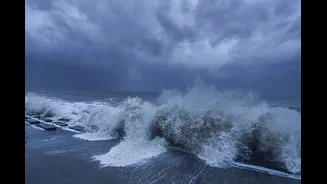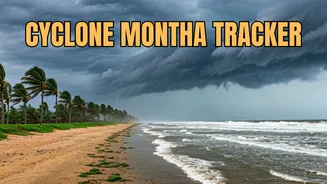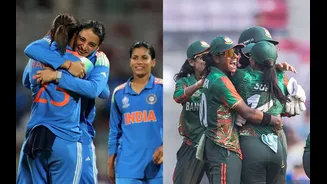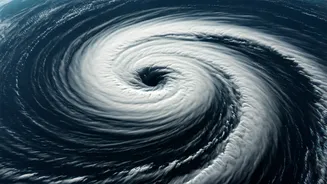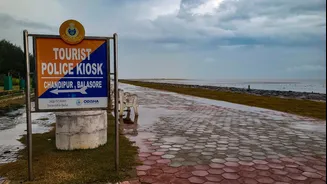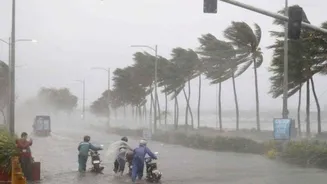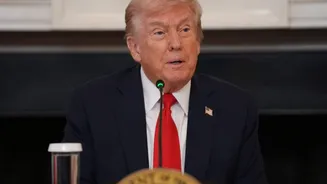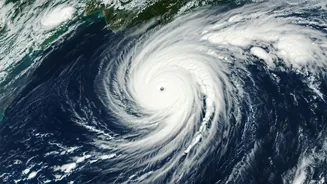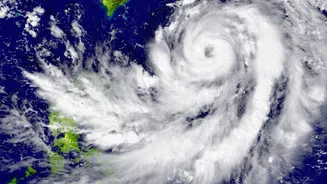Storm Formation Explained
Tropical storms, including cyclones like Montha, develop over warm ocean waters. The process begins when warm, moist air rises from the ocean's surface.
As this air ascends, it cools and condenses, forming clouds and releasing latent heat. This heat fuels the storm, causing more air to rise and creating a cycle that intensifies the system. Key ingredients are sea surface temperatures exceeding about 26.5 degrees Celsius (80 degrees Fahrenheit) and a pre-existing atmospheric disturbance, such as a low-pressure area or a tropical wave. As the storm strengthens, it develops a rotating circulation due to the Earth's rotation (Coriolis effect). This rotation is crucial, as it organizes the storm and leads to the formation of a defined eye, the calm center of the cyclone. Furthermore, the storm's path is influenced by atmospheric conditions, including prevailing winds and the presence of other weather systems. The interaction of all these elements determines the storm's intensity, movement, and the areas it impacts.
Essential Storm Ingredients
Several factors must align for a tropical storm to form. Firstly, warm ocean waters are a fundamental requirement, acting as the primary fuel source. The ocean's warmth transfers energy to the atmosphere, powering the storm's development. Secondly, a pre-existing atmospheric disturbance is necessary to kickstart the process. This can be a cluster of thunderstorms, a trough of low pressure, or a tropical wave. Thirdly, the Coriolis effect, caused by Earth's rotation, is critical for causing the storm to spin. Without this, the storm would not organize into a circular system. Additionally, the wind shear, or the change in wind speed and direction with height, must be minimal. High wind shear disrupts the storm's structure, preventing it from intensifying. Finally, the storm's environment includes atmospheric stability and moisture. A less stable atmosphere facilitates the upward movement of air, while abundant moisture provides the necessary fuel for cloud and rainfall formation. These conditions are typically found in the tropical regions, such as the Bay of Bengal, where cyclones like Montha frequently form.
Naming Tropical Cyclones
The process of naming tropical cyclones is an international collaboration, led by the World Meteorological Organization (WMO). The goal of naming storms is to facilitate quick and easy communication about weather events, ensuring that people can be informed of impending dangers. Instead of identifying storms by their complex latitude and longitude coordinates, using names is simple to remember and convey across different media, including written news, radio, and television. The names are chosen well in advance and are pre-determined by regional meteorological organizations or tropical cyclone warning centers. Specifically, the names are selected from a list and follow a rotating sequence. For the North Indian Ocean, which includes India, Bangladesh, Maldives, Myanmar, Oman, Pakistan, Sri Lanka, and Thailand, each country suggests a list of names. Once a storm forms, it's assigned the next name on the relevant regional list. The same names can be reused every few years, unless a cyclone causes significant damage or fatalities; then the name is retired and replaced with a new one.
Regional Naming Protocol
The North Indian Ocean, including areas around India, follows a specific naming convention. Eight countries – India, Bangladesh, Maldives, Myanmar, Oman, Pakistan, Sri Lanka, and Thailand – each contribute a list of names. These lists are used sequentially when cyclones form in the region. The process ensures that each nation has a role in the naming system. This collaborative approach enhances regional cooperation and communication during weather emergencies. Each name on the list is carefully chosen to be easy to pronounce and understand, ensuring clear communication, even across language barriers. Furthermore, the WMO and its regional committees oversee the entire naming process. This oversight guarantees consistency and adherence to global standards for identifying and tracking tropical cyclones. If a cyclone proves particularly devastating, the contributing nation can request that the name be retired and replaced, ensuring it is not used again. The system aims to eliminate confusion and maintain respectful communication during critical weather events, helping save lives and protect property.


